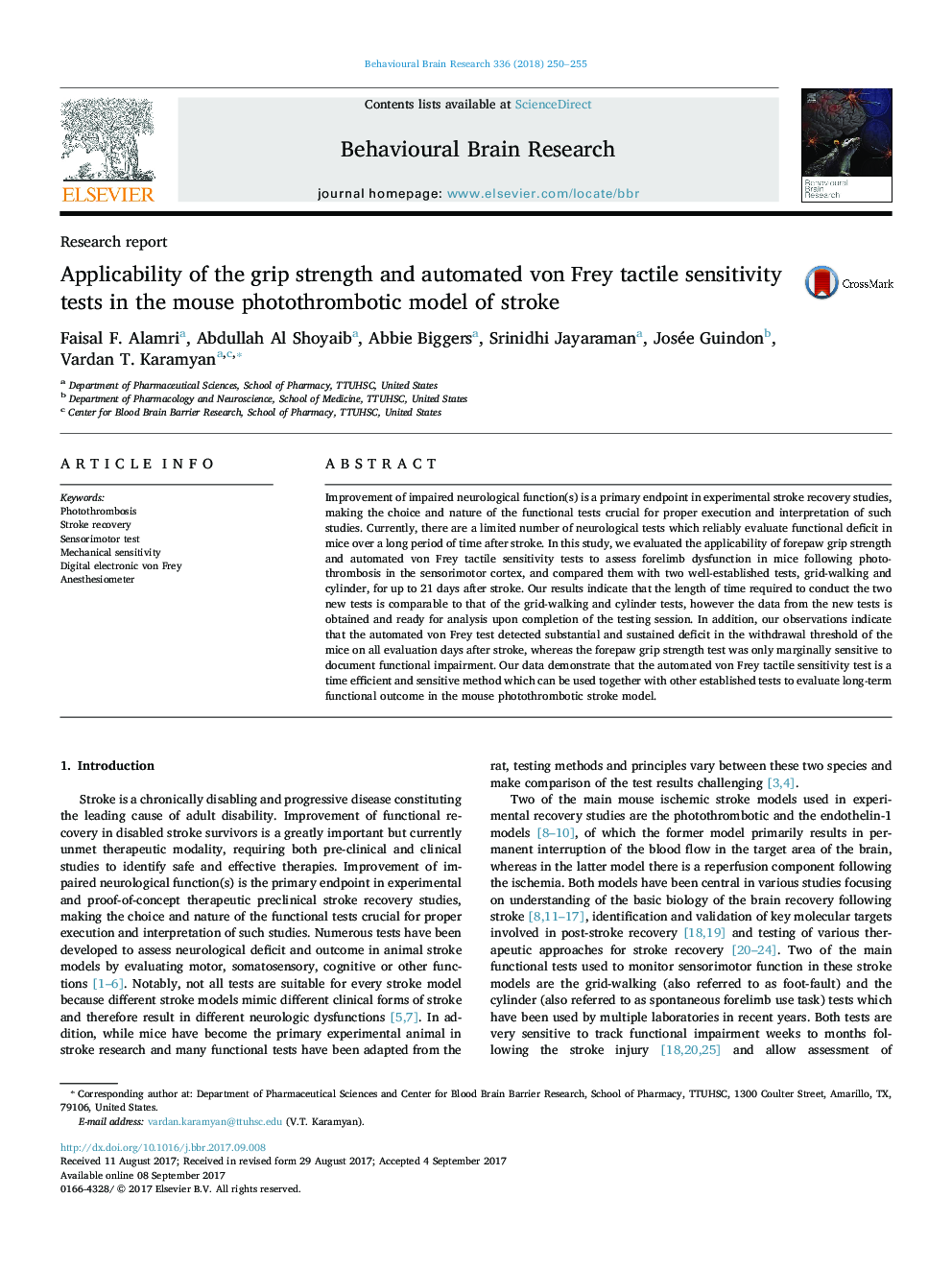| Article ID | Journal | Published Year | Pages | File Type |
|---|---|---|---|---|
| 5735041 | Behavioural Brain Research | 2018 | 6 Pages |
Abstract
Improvement of impaired neurological function(s) is a primary endpoint in experimental stroke recovery studies, making the choice and nature of the functional tests crucial for proper execution and interpretation of such studies. Currently, there are a limited number of neurological tests which reliably evaluate functional deficit in mice over a long period of time after stroke. In this study, we evaluated the applicability of forepaw grip strength and automated von Frey tactile sensitivity tests to assess forelimb dysfunction in mice following photothrombosis in the sensorimotor cortex, and compared them with two well-established tests, grid-walking and cylinder, for up to 21Â days after stroke. Our results indicate that the length of time required to conduct the two new tests is comparable to that of the grid-walking and cylinder tests, however the data from the new tests is obtained and ready for analysis upon completion of the testing session. In addition, our observations indicate that the automated von Frey test detected substantial and sustained deficit in the withdrawal threshold of the mice on all evaluation days after stroke, whereas the forepaw grip strength test was only marginally sensitive to document functional impairment. Our data demonstrate that the automated von Frey tactile sensitivity test is a time efficient and sensitive method which can be used together with other established tests to evaluate long-term functional outcome in the mouse photothrombotic stroke model.
Related Topics
Life Sciences
Neuroscience
Behavioral Neuroscience
Authors
Faisal F. Alamri, Abdullah Al Shoyaib, Abbie Biggers, Srinidhi Jayaraman, Josée Guindon, Vardan T. Karamyan,
